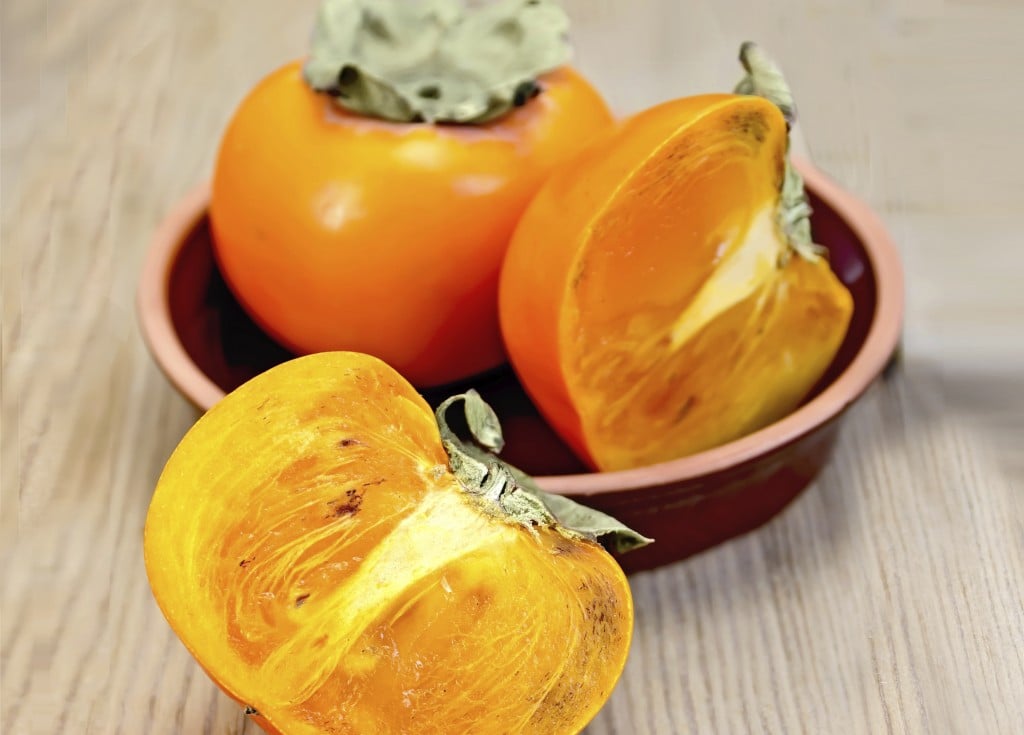The Pleasure of Persimmons

Timing is everything with persimmons. Give them just enough time to ripen, and their delectable sweetness will make you think you’re eating “the food of the gods” (as their Greek-derived botanical name, Diospyros kaki, suggests). Looking much like an under-ripe tomato or peach, the persimmon is a delicious alternative for holiday snacking, cooking or baking.
Power Up
One persimmon (2 1⁄2 inches in diameter) provides 55 percent and 21 percent of the adult daily requirements of vitamins A and C, respectively, and has as much dietary fiber (6 grams) as two slices of whole wheat bread. The fruits are loaded with phytonutrients, flavonoids and antioxidants that inhibit tumor development and improve eyesight. The International Journal of Oncology reported in 2011 that fisetin, a flavonoid in persimmons, can help kill breast cancer cells. But don’t eat too much; persimmons are high in fructose, which in large quantities can pack on pounds.
Did You Know?
The persimmon, which thrives in warm, dry climates, was cultivated thousands of years ago in China and 1,300 years back in Japan. Native Americans were growing persimmons when the first settlers arrived, but the fruit really took off here in the 1850's after Navy Commodore Matthew Perry sailed home from his voyage to Japan with persimmon trees that had been growing on its southern shore.
China is far and away the world’s top persimmon grower, trailed by Korea and Japan, which claims the persimmon as its national fruit. Domestic persimmons are grown in California and elsewhere in the southwest and south.
Buy/Store/Serve
Widely available in November and December, persimmons come in two types: Fuyus are short, firm and tomato-like and are good for eating fresh, while peach-shaped hachiyas are better for cooking and baking.
Never eat an unripened persimmon; the extremely bitter taste could leave you puckering for hours, so make sure it’s ripe before you bite. The skin should be transparent and bright orange all around. If it’s not, place fuyus on your counter in sunlight until the color brightens. Chill hachiyas until they soften.
Eat a persimmon as soon as it ripens for maximum sweetness. Don’t let it sit, because it’ll spoil quickly even when refrigerated. Persimmons are great for breakfast on their own or dried, chopped and sprinkled into cereal. They add pizzazz to fruit or veggie salads and are delicious baked into breads, cakes and cookies, chopped into salsa or chutney, boiled into pudding or tea or blended into frozen cocktails or smoothies. —Pete Kelly

